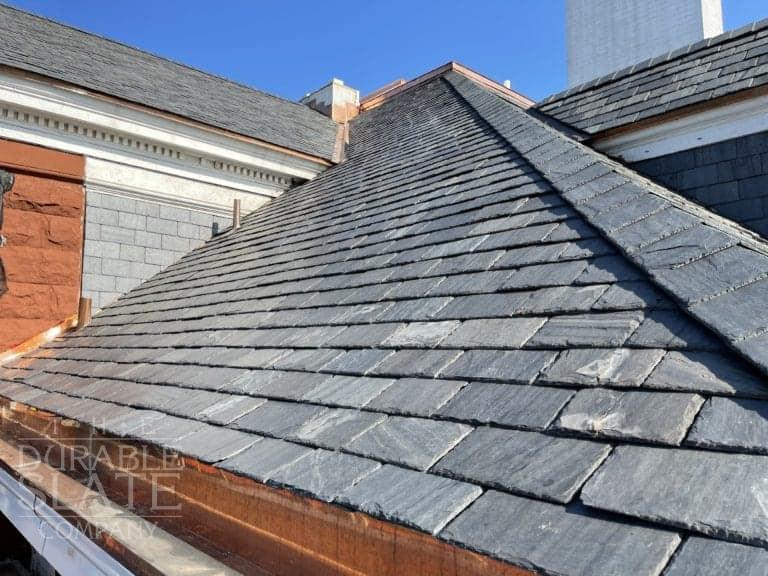Step-by-Step Guide to Discovering the Right Roofing Companies in Gainesville
Step-by-Step Guide to Discovering the Right Roofing Companies in Gainesville
Blog Article
Best Practices for Ensuring Proper Roofing Air Flow
A well balanced intake and exhaust air vent ratio, frequently 1:300, plays a critical duty, with intake vents ideally placed at the lower side of the roof covering for trendy air entry and exhaust vents at the peak for warm air departure. Maintaining insulation away from vents is essential to stop air flow constraint.
Understand Ventilation Essentials
Appropriately understanding air flow basics is necessary for ensuring the long life and effectiveness of roof. Effective ventilation mitigates wetness buildup and temperature extremes in the attic, both of which can result in considerable architectural damage gradually. A well-ventilated roofing assists in protecting against usual concerns such as mold and mildew development, timber rot, and ice dams, which can jeopardize the integrity of the roofing products and the underlying structures.
The primary goal of air flow is to assist in the activity of air, permitting a constant exchange in between the indoor and outdoor settings. This equilibrium is attained with a combination of consumption and exhaust vents that collaborate to maintain optimum air movement. Consumption vents, generally situated along the soffits or eaves, allow fresh air to get in the attic room area, while exhaust vents, often situated at or near the roof ridge, make it possible for warm, moist air to get away.
Secret variables affecting the effectiveness of roof air flow include proper positioning, adequate sizing, and ensuring that both consumption and exhaust vents are unobstructed. Routine evaluation and maintenance are critical to determine potential clogs, damage, or inefficiencies in the air flow system, thus securing the roof's efficiency and resilience.
Sorts Of Roof Vents
Roof vents play a vital role in keeping effective attic room air flow and, by extension, the total wellness of the roofing system. Numerous sorts of roof vents are offered, each with distinct benefits customized to specific roof requirements. Ridge vents, as an example, are set up along the roofing system's peak, permitting cozy, damp air to run away from the attic. They offer constant ventilation and blend flawlessly with the roofline, making them both effective and visually pleasing.

Soffit vents are mounted under the eaves and work in tandem with roofing vents to make sure a well balanced consumption and exhaust system. By allowing cooler air to enter from below, soffit vents help with the expulsion of hot air via top vents. Gable vents, located on the exterior walls of the attic room, offer another reliable remedy, specifically in homes with saddleback roofs.
Examine Your Current Air Flow

Following, think about the age and condition of your roofing materials and air flow parts. Older systems may not abide with existing building regulations or may have deteriorated gradually, lowering their efficiency. Conduct a detailed exam visit the site to identify any type of indications of damage, such as rust, damage, or spaces that can compromise the system's performance.
Furthermore, gauge the attic room temperature level and humidity levels. High temperature levels and humidity can indicate insufficient ventilation.
Setup Best Practices
Reliable setup of roof air flow systems is extremely important for ensuring optimal performance and long life. Proper setup starts with understanding the certain ventilation demands of the roofing system and the building it covers. This entails determining the proper ratio of intake to wear down vents, normally sticking to the 1:300 rule, which stipulates one square foot of ventilation for each 300 square feet of attic flooring space.

The placement of vents is similarly important. Consumption vents must be mounted at the roof covering's reduced edge, usually in the soffits, to allow go right here trendy air to get in. Exhaust vents, on the other hand, need to be installed near or at the roof covering's optimal to help with the departure of warm, damp air. This produces a natural air flow that aids keep temperature and moisture balance within the attic room.
Seal all vent links diligently to protect against air leakages and possible water infiltration. Usage high-quality products and adhere to supplier standards to ensure durability and performance. In addition, integrating ridge vents with baffles can significantly enhance air movement efficiency by avoiding wind-driven rainfall and snow from going into the attic room.
Eventually, exact setup of roof ventilation systems reduces prospective concerns such as mold growth, ice dams, and structural damages, making sure the roof covering's honesty and the structure's general wellness.
Normal Upkeep Tips
Consistency in maintenance techniques is essential to making sure the long-term performance of roofing air flow systems. During these assessments, make certain that vents are totally free of debris, nests, and other obstructions that could impede air movement.
Cleaning up the vents is another necessary task. Utilize a soft brush or a vacuum cleaner to get rid of dust and debris from intake and exhaust vents. Beware not to harm the vent displays or louvers during the process. Additionally, check the attic space for any signs of water damages, which could compromise the honesty of the roof.
Correct insulation is just as vital. Ensure that attic insulation does not block the vents, as this can drastically limit air movement. Rearrange or change it to maintain an effective barrier. if any insulation has moved or cleared up.
Finally, change any kind of damaged or missing out on parts without delay. sites Damaged vents, broken tiles, or tatty flashing can all contribute to inadequate ventilation and ought to be attended to right away. Routine upkeep guarantees that the roof air flow system functions optimally, therefore extending the life expectancy of the roof itself.
Conclusion
Making sure correct roofing ventilation is extremely important for maintaining the efficiency and toughness of a roof system. Adherence to the 1:300 intake and exhaust vent proportion, paired with the tactical positioning of vents, is essential. Normal biannual evaluations, particles cleaning, and making certain insulation does not obstruct airflow are critical techniques. Implementing these finest practices will certainly promote a well-ventilated roof, thereby minimizing possible problems connected to moisture buildup and too much heat, ultimately prolonging the roof covering's life expectancy.
A well balanced intake and exhaust vent proportion, commonly 1:300, plays a critical duty, with consumption vents ideally placed at the reduced edge of the roof covering for cool air entry and exhaust vents at the top for warm air exit. Intake vents, generally located along the soffits or eaves, permit fresh air to enter the attic room space, while exhaust vents, often located at or near the roofing ridge, make it possible for warm, damp air to get away.
Soffit vents are mounted under the eaves and job in tandem with roofing system vents to make sure a balanced consumption and exhaust system. By enabling cooler air to enter from below, soffit vents help with the expulsion of warm air via top vents. Adherence to the 1:300 consumption and exhaust vent ratio, combined with the calculated placement of vents, is crucial.
Report this page